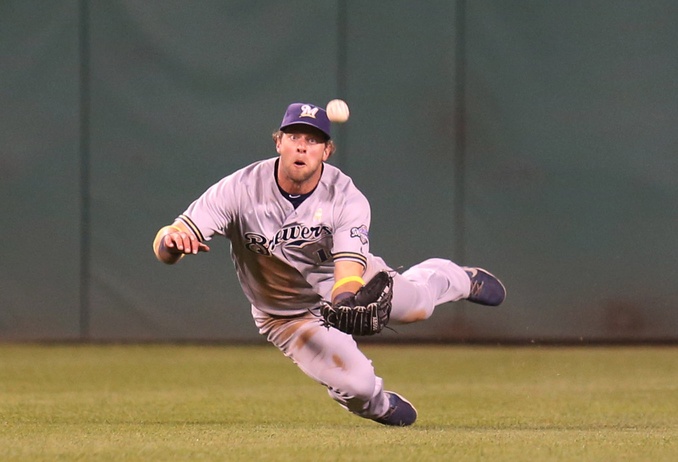As the season winds down, broadcasters begin to look back on the season that was and provide contextualizing statistics that purport to tell the story of the year. One common note that has appeared on various broadcasts throughout the year is that the Brewers have the league’s worst defense—but that simply is not true.
It is true that they lead the league in errors, but at this point we know better than to trust that errors provide the full picture. At their best, errors tell a story, in the same way that RBIs do. They are not predictive, nor are they particularly valuable evaluative tools. Just like RBIs, errors can tell us what happened on a particular play.
But at their worst, errors are subjective and tell no story. Too often, whether or not a specific play should be called an error is in question, and the official scorer has the discretion to decide one way or the other. When those decisions are made incorrectly or unfairly, errors cease to provide any valuable information. That is not the official scorer’s fault; instead, it is the nature of the metric itself.
None of what I’ve said above is groundbreaking in any way; it was the rationale for developing better, more comprehensive defensive statistics, and we are all smarter, better-informed baseball fans because we have access to FRAA and don’t have to rely on errors or fielding percentage.
With that being said, though, errors still hold some level of sway over the general public, so seeing the Brewers at the top (or bottom, depending on your perspective) of the error leaderboard is an unwelcome sight. But errors do not tell the whole story; nor do they tell a particularly accurate one. And that is particularly true when it comes to measuring team defense.
The big issue with errors (aside from their subjectivity) is that they punish defenders who have more chances—that is, players with better range make more errors simply because they attempt plays that lesser defenders don’t even have a chance at. For this reason, metrics such as FRAA are better able to measure individual defense because they try to account for the difficulty level of the play the fielder is attempting.
On a team level, though, the easiest and clearest way of measuring defense is simple defensive efficiency, or the percentage of balls in play that the team defense turns into outs. In this category, the Brewers are middle-of-the-pack rather than worst, and that makes a big difference. Their .701 mark ranks 16th and puts them closer to the second-place Blue Jays (.718) than it does the 29th-place Twins (.681). This is not an elite defense, but it’s clearly better than the error leaderboard suggests.
This distinction matters for a couple reasons. First, from a fan or outsider’s perspective, proper context is valuable and important. The team defense is not a huge problem that needs to be addressed this offseason. Without watching every single error, there isn’t really a way to figure out exactly why the Brewers’ number is so high—it could be unlucky official scoring, truly superb range creating more difficult plays, an actual propensity for boneheaded mistakes, or something entirely unrelated—but the raw error total itself is not actually worrying.
And second, the defensive efficiency/error discrepancy matters from a team-building perspective. The Brewers should be looking to take a step forward in 2017, and if they truly had the worst defense in baseball, that would be a key issue to address. But they don’t, so the situation is not a disaster, and thus the front office isn’t forced into action on this particular issue.
Errors have been generally dismissed in the sabermetric community, and for good reason. But no one wants to show up at the bad end of a leaderboard—no matter what the statistic—so addressing this topic before it became a discussion point this offseason seemed wise.
